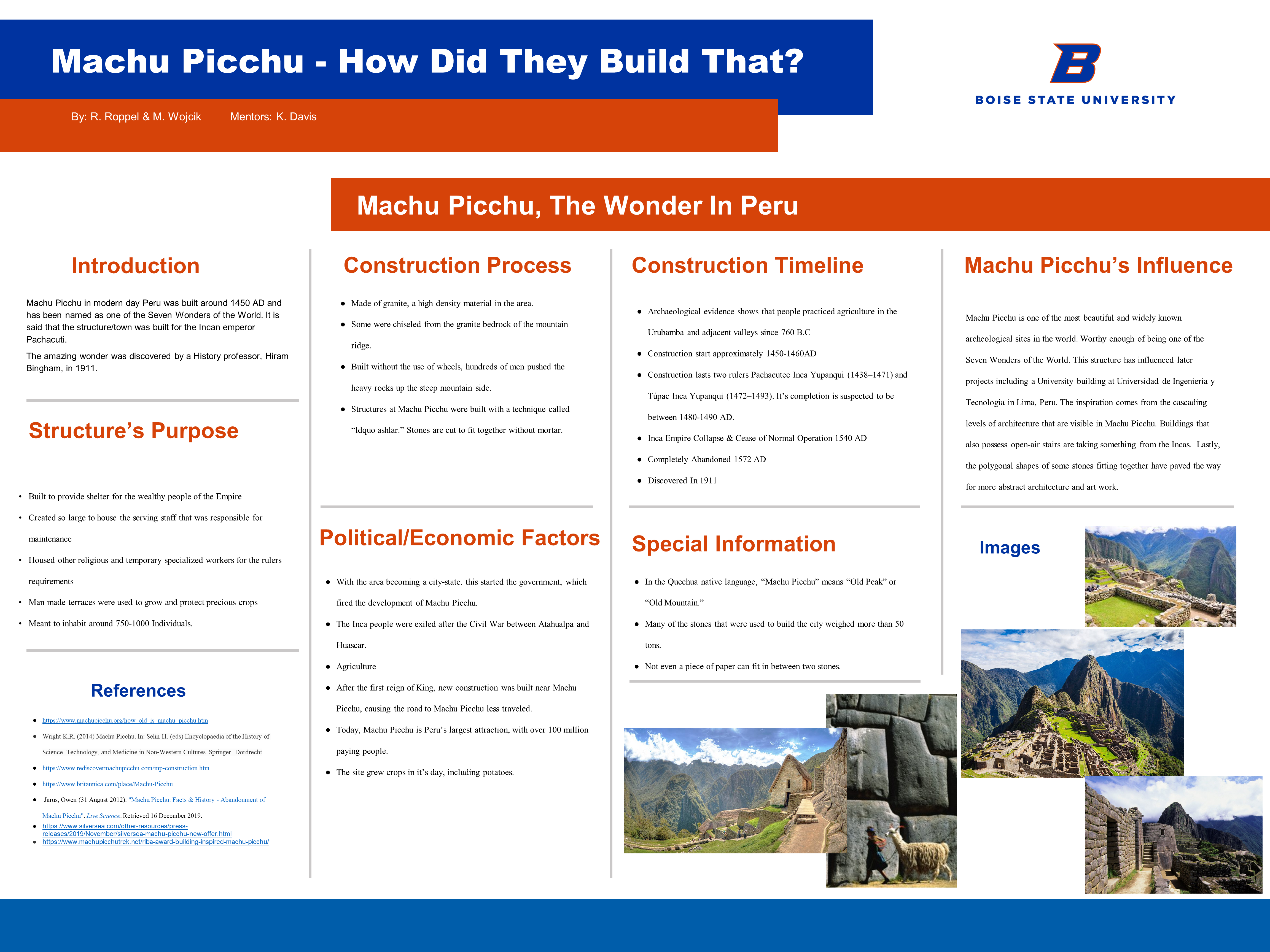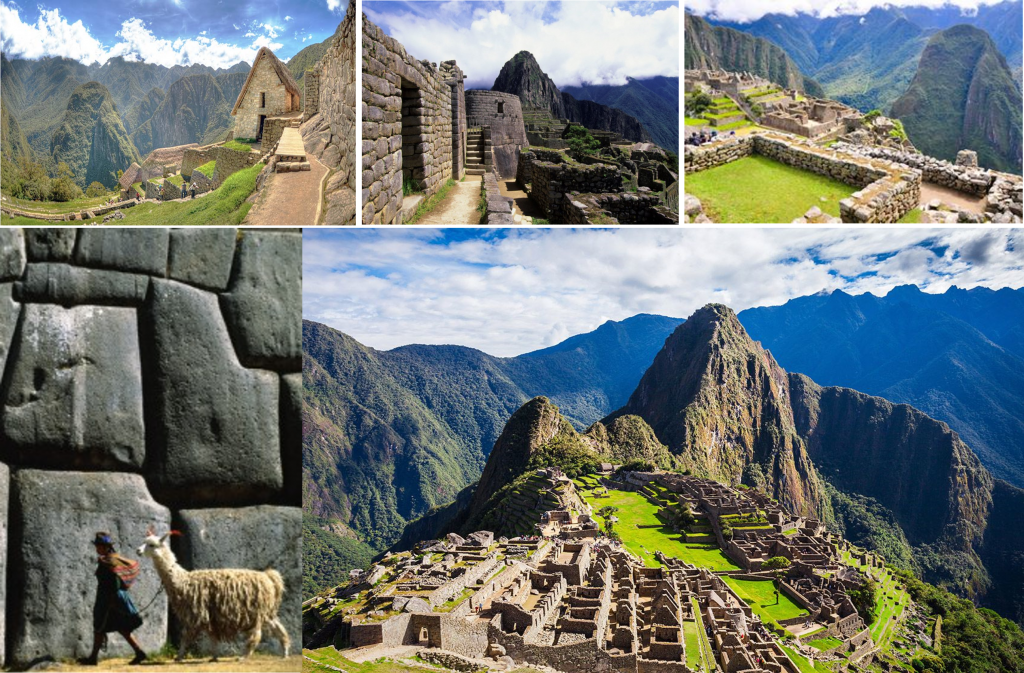Machu Picchu, The Wonder in Peru
Maxwell Wojcik, Riley Roppel, Ben Tolomeo, Dr. Kirsten Davis

Introduction
Machu Picchu in modern day Peru was built around 1450 AD and has been named as one of the Seven Wonders of the World. It is said that the structure/town was built for the Incan emperor Pachacuti.
The amazing wonder was discovered by a History professor, Hiram Bingham, in 1911.

Structure’s Purpose
- Built to provide shelter for the wealthy people of the Empire
- Created so large to house the serving staff that was responsible for maintenance
- Housed other religious and temporary specialized workers for the rulers requirements
- Man made terraces were used to grow and protect precious crops
- Meant to inhabit around 750-1000 Individuals.
Construction Process
- Made of granite, a high density material in the area.
- Some were chiseled from the granite bedrock of the mountain ridge.
- Built without the use of wheels, hundreds of men pushed the heavy rocks up the steep mountain side.
- Structures at Machu Picchu were built with a technique called “ldquo ashlar.” Stones are cut to fit together without mortar.
Political/Economic Factors
- With the area becoming a city-state. this started the government, which fired the development of Machu Picchu.
- The Inca people were exiled after the Civil War between Atahualpa and Huascar.
- Agriculture
- After the first reign of King, new construction was built near Machu Picchu, causing the road to Machu Picchu less traveled.
- Today, Machu Picchu is Peru’s largest attraction, with over 100 million paying people.
- The site grew crops in it’s day, including potatoes.
Construction Timeline
- Archaeological evidence shows that people practiced agriculture in the Urubamba and adjacent valleys since 760 B.C
- Construction start approximately 1450-1460AD
- Construction lasts two rulers Pachacutec Inca Yupanqui (1438–1471) and Túpac Inca Yupanqui (1472–1493). It’s completion is suspected to be between 1480-1490 AD.
- Inca Empire Collapse & Cease of Normal Operation 1540 AD
- Completely Abandoned 1572 AD
- Discovered In 1911
Special Information
- In the Quechua native language, “Machu Picchu” means “Old Peak” or “Old Mountain.”
- Many of the stones that were used to build the city weighed more than 50 tons.
- Not even a piece of paper can fit in between two stones.
Machu Picchu’s Influence
Machu Picchu is one of the most beautiful and widely known archeological sites in the world. Worthy enough of being one of the Seven Wonders of the World. This structure has influenced later projects including a University building at Universidad de Ingenieria y Tecnologia in Lima, Peru. The inspiration comes from the cascading levels of architecture that are visible in Machu Picchu. Buildings that also possess open-air stairs are taking something from the Incas. Lastly, the polygonal shapes of some stones fitting together have paved the way for more abstract architecture and art work.
References
- MachuPicchu.org
- Wright K.R. (2014) Machu Picchu. In: Selin H. (eds) Encyclopaedia of the History of Science, Technology, and Medicine in Non-Western Cultures. Springer, Dordrecht
- Rediscover Machu Picchu
- Britannica.com
- Jarus, Owen (31 August 2012). “Machu Picchu: Facts & History – Abandonment of Machu Picchu”. Live Science. Retrieved 16 December 2019.
- SilverSea.com
- MachuPicchuTrek.net